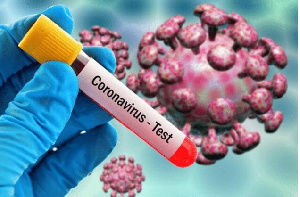At the time, the government had already committed a lot of funds derived mainly from loans, and grants from donor partners into fighting the disease. Therefore, the passage of this law represented a move to establish a reliable source of funds for the continuing fight against the pandemic.
However, the nature of this law implies that when the pandemic is over, the country will cease to collect this levy.
However, the COVID-19 pandemic is not the only disease of public health concern and will not also be the last. Even during the COVID-19 pandemic, the country recorded other disease outbreaks such as polio, cerebrospinal meningitis (CSM), and yellow fever, which also spread quickly resulting in loss of lives, especially in the case of CSM and yellow fever.
In view of this, and against the background that the country does not have a reliable source of funds to support her Integrated Disease Surveillance and Response (IDSR) plan and or epidemic preparedness activities, it will be important to amend this law to establish a major fund, which will yield resources towards epidemic preparedness financing in the country.
Potential of the proposed amended COVID-19 Health Recovery Levy Act
The COVID-19 Health Recovery Levy Act imposes a one percent levy on selected supply of goods and services.
In 2021, this levy generated approximately US$144m representing 11% of the budgetary allocation to the country’s health sector. This shows that this levy has the potential to rake in the resources needed for the intended purpose. The country cannot afford to stop collecting this levy when COVID-19 is over.
This is why this Act needs to be amended to broaden its scope beyond only the fight against the COVID-19 pandemic to include the entire public health emergency concerns. During the amendment, the levy could be raised from the current one percent to about two percent.
Also, apart from targeting supply of goods and services, other lucrative sectors of the economy such as telecommunications could be targeted. If these measures are implemented coupled with an increase in business activities and projected expansion of the economy, this levy could offer the country a reliable source of funds to support routine IDSR activities and for that matter Epidemic Preparedness and Response (EPR) financing.
Challenges in implementing EPR in Ghana
Over the past couple of years, funding for routine disease surveillance activities (ISDR) has dwindled. Budgetary allocations to the health sector go into emoluments for health staff, and the construction of health facilities leaving significantly fewer resources available to undertake routine disease surveillance activities.
This implies that diseases that could be detected and managed on time will be left to degenerate into an epidemic level with their devastating consequences on the population. Last year, the total national health budget was $1.30 billion.
This budget included payment of salaries, health research amongst others.
Out of the figure, $803m was expected to be spent on health delivery, and $9 million on goods and services. EPR fell under the goods and services budget. This was woefully inadequate considering the volume of work expected under the EPR.
Madam Elizabeth Tindan, Tamale Metropolitan Public Health Nurse shared her experience regarding the fight against the COVID-19 saying, “For the COVID-19, because the funds were not there when COVID-19 emerged, we, the staff, took it upon ourselves to get veronica buckets for our office, used our clothes to sew facemasks to use during our public engagements before support started coming in from government and civil society organisations.”
Mr. Iddrisu Mohammed Kamil, Senior Development Planning Officer at Yendi Municipal Assembly also shared his experience with regard to lack of dedicated funds to fight epidemics at the Assembly saying “actually, it was difficult when COVID-19 was recorded.
We were just concentrating on our usual District Assemblies’ Common Fund (DACF) as well as our internally generated funds (IGF). We are facing problems in raising IGF and even if they are raised, there is already pressure on them.
So, actually, it was not easy until the DACF came from the government, and it assisted us in coming out in setting up the Public Health Emergency Committees, who stepped up the efforts in sensitisation and provision of personal protective equipment” to aid the fight against the pandemic in the municipality.
Mr. Mumuni Mohammed, Northern Regional Programme Manager of SEND-GHANA, spoke about the need to establish a dedicated fund for fighting epidemics in the country saying “The emergence of the COVID-19 pandemic has really exposed us.
The structures to fight epidemics are really not working because of lack of funds.
"We have seen that countries that have strong structures backed with funds have been able to go through the pandemic and their economies have rebounded. We need a reliable source of funds for EPR.”
The way forward
When the country deemed it important to expand educational infrastructure, she introduced the Ghana Education Trust Fund to generate the needed funds for that cause. Likewise, she introduced the National Health Insurance Scheme to take care of clinical care to abolish cash and carry in health care delivery.
As has been witnessed over the years, diseases will continue to come. Therefore, the country needs to continue to be prepared by strengthening its IDSR system by ensuring the sustainable availability of funds for that purpose.
There is, therefore, a need to urgently amend the COVID-19 Health Recovery Levy Act to broaden its scope, increase the levy, and target other sectors to ensure reliable funds towards the fight against disease outbreaks to protect the population.
Read full article

